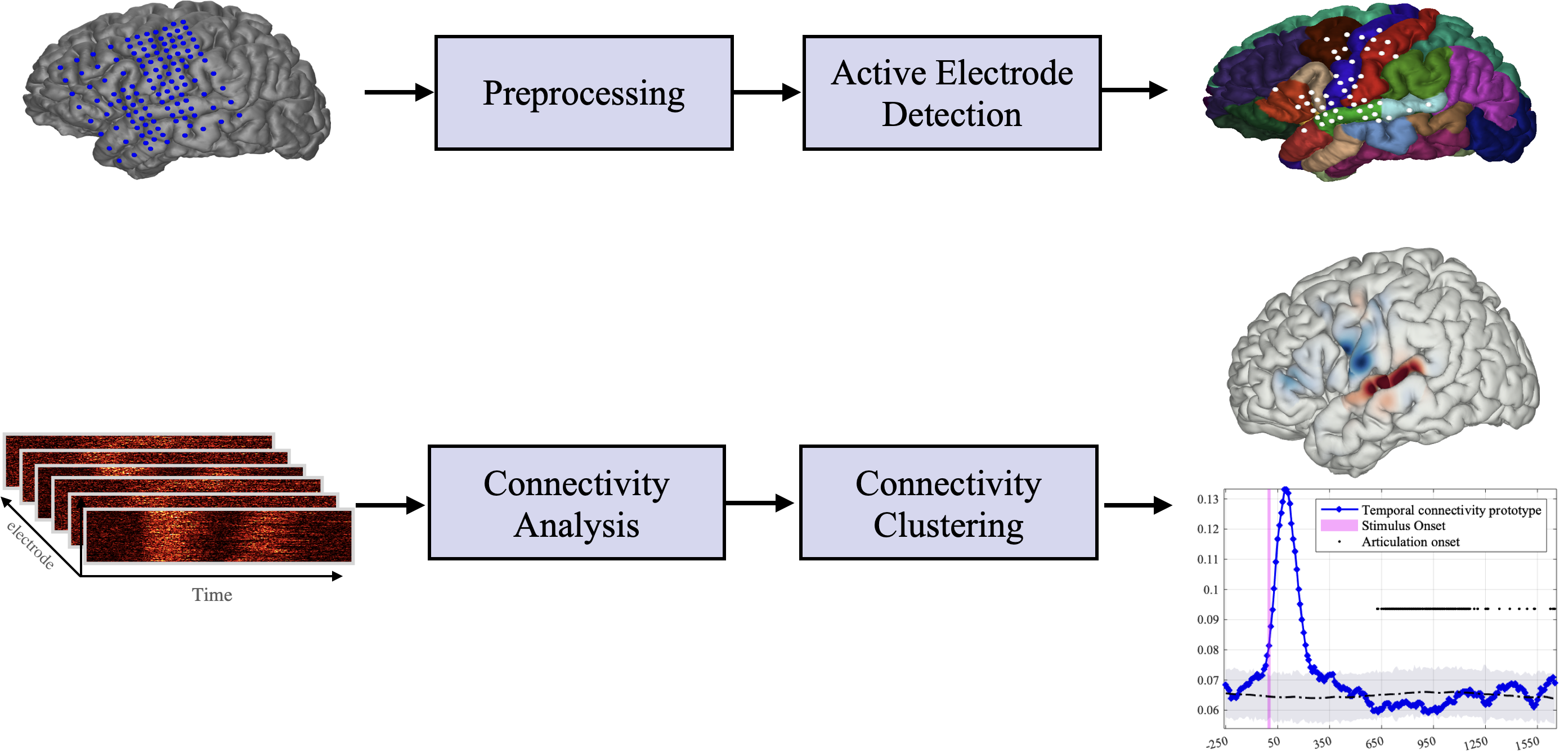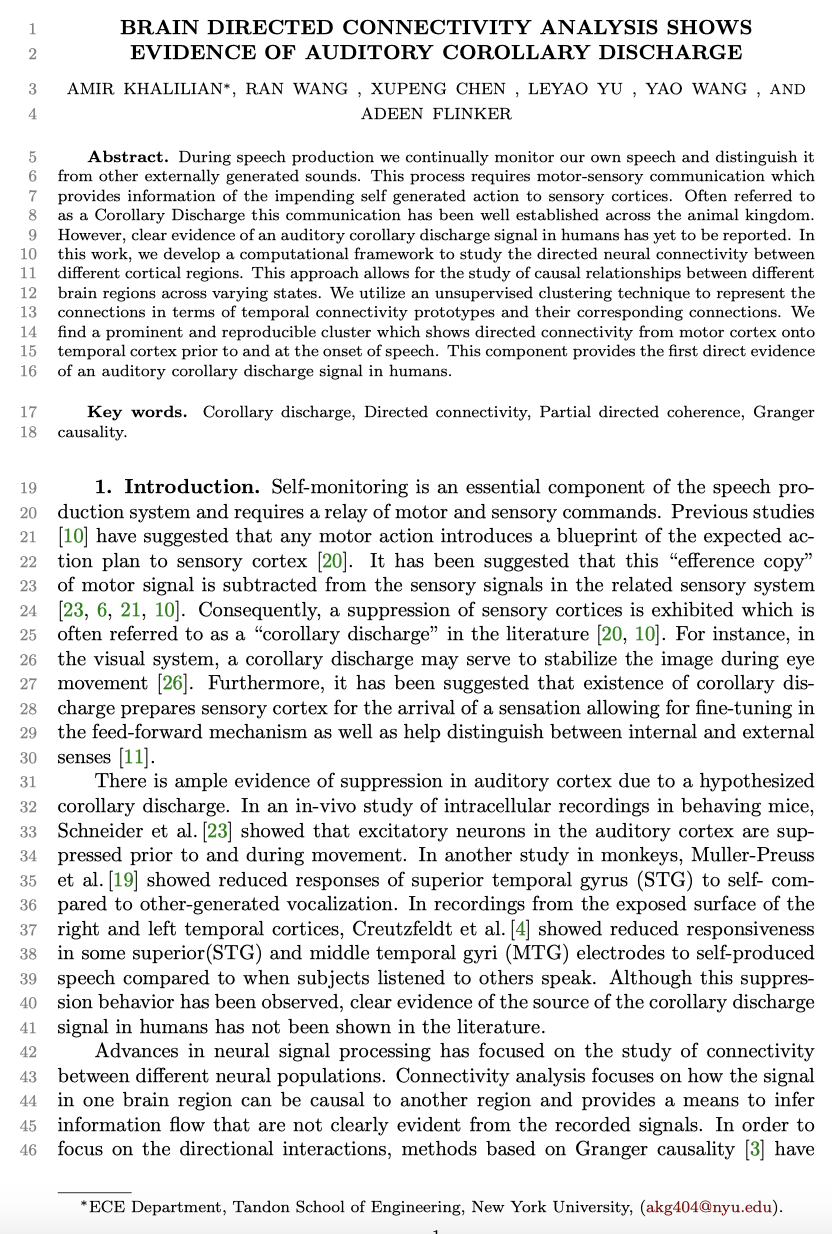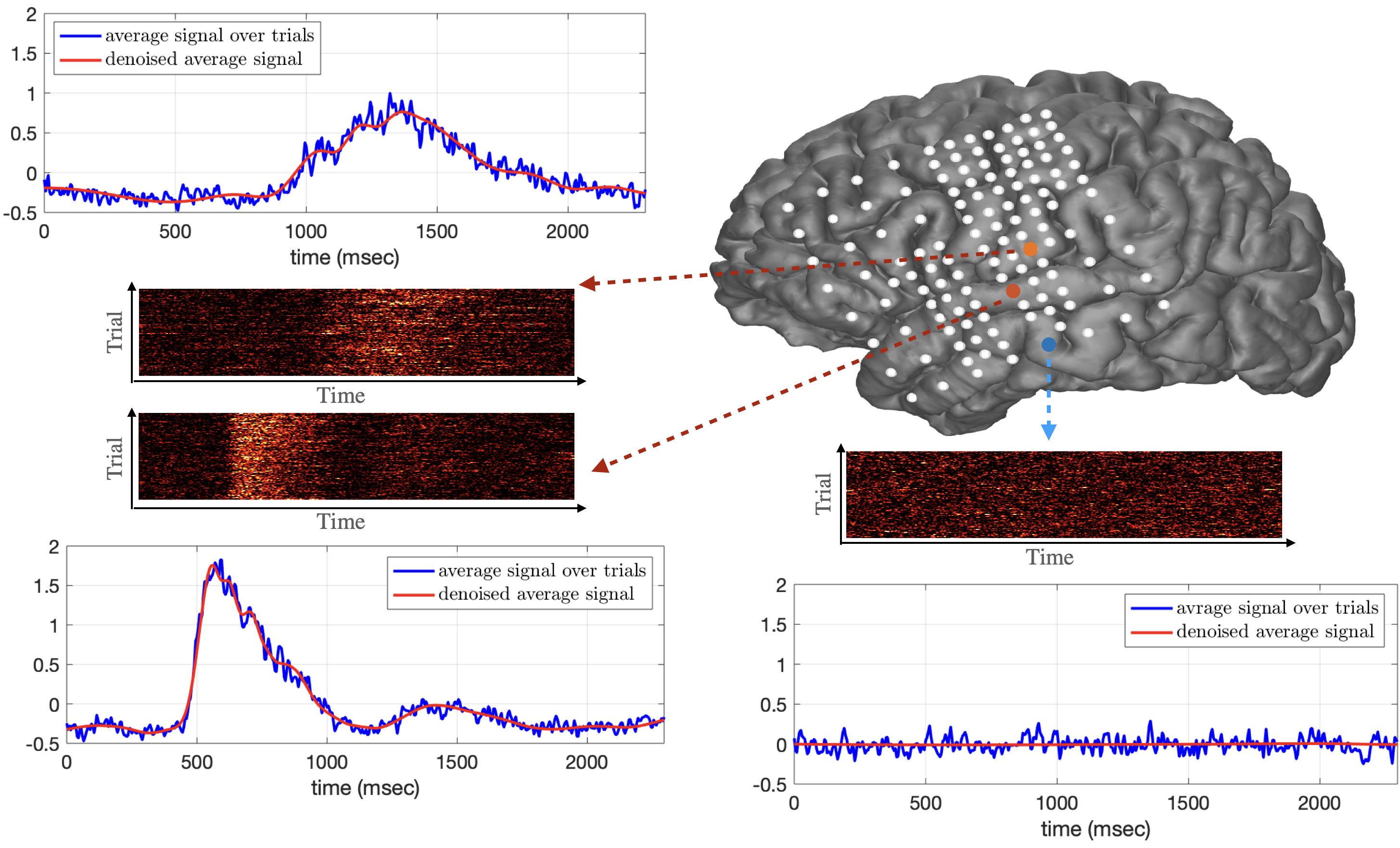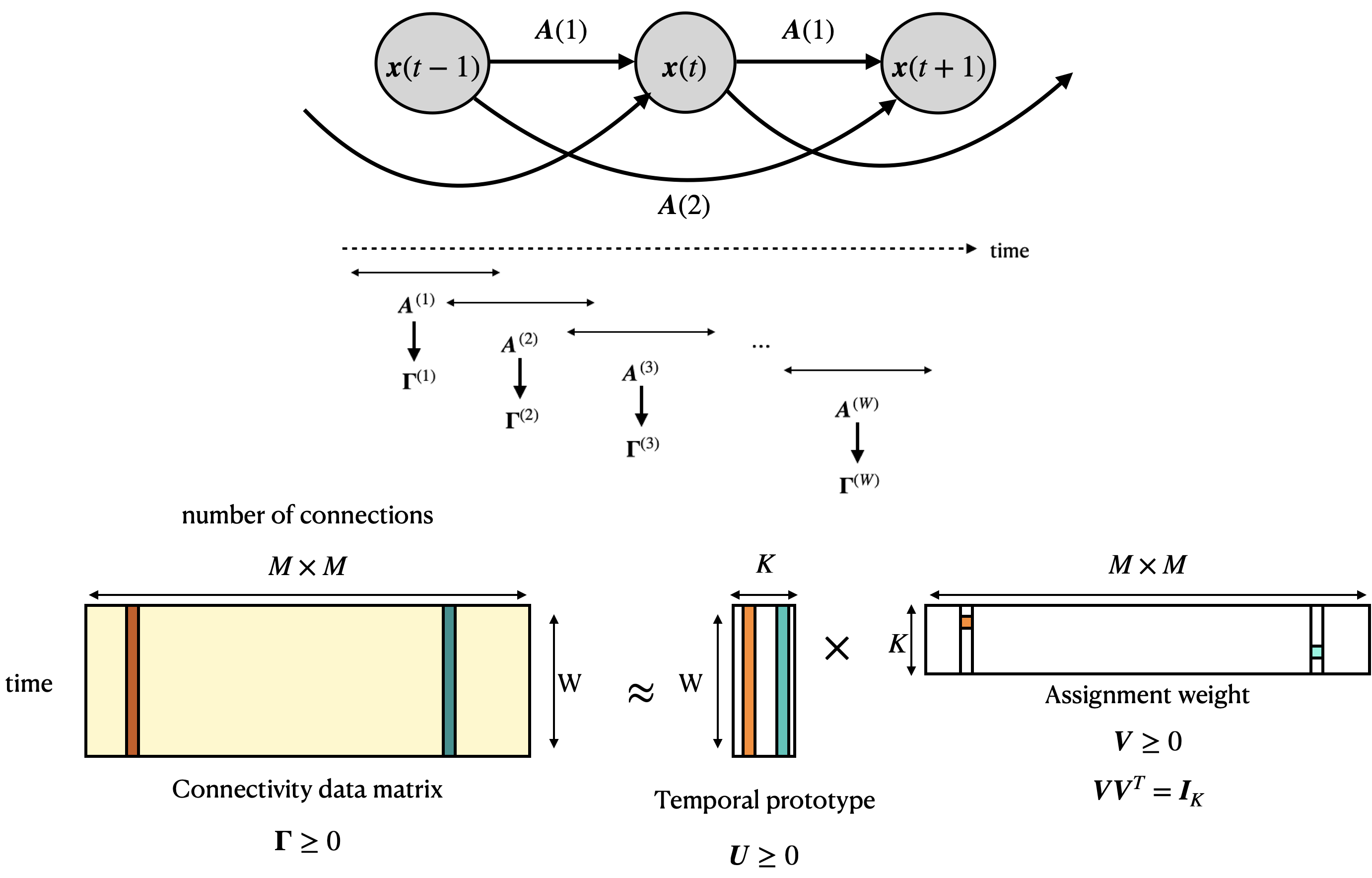Brain Directed Connectivity Analysis Framework
|
|
|
|
|
|
|
 |
|
|
Abstract
| In this project, we are interested in developing techniques to estimate the directed connectivity between cortical regions. Directed connectivity describes the directional influence of one neural unit over another, and in a sense is the union of the structural and functional connectivity. Towards this goal, we have developed a toolbox of algorithms enabling us to investigate the dynamic connectivity between different brain regions by considering a measure of Granger causality. A multivariate autoregressive (MVAR) model is utilized to represent the effect of signal from one electrode to another in a data-driven manner. The developed toolbox allows for the investigation of different pre-processing techniques and Granger causality measures. Furthermore, an automatic active electrode selection algorithm eliminates the need for manually selecting a few electrodes (which is a common difficulty in the literature) and allows for investigating the connectivity in a more efficient way. From the fitted MVAR coefficient, different measures of connectivity such as partial directed coherence (PDC) can be calculated and analyzed. In order to reduce the complexity of the analysis in an unsupervised manner, we use a clustering algorithm to cluster the connections between different electrodes. Consequently, each cluster has a prototype connection that can represent its temporal dynamics. Our findings show that the prototype connections follow the expected dynamics of different tasks. Furthermore, the clustered connections allow for visualizing the connectivity dynamics in the brain. A major cluster in our findings replicated across tasks and patients, shows directed connectivity from motor cortex onto temporal cortex prior to and at the onset of speech. |
Report and Supplementary Material
 |
Khalilian, Amir and Wang, Ran and Chen, Xupeng and Yu, Leyao and Wang, Yao and Flinker, Adeen. Brain Directed Connectivity Analysis Framework ( HOSTED HERE , the Password is ecognyu2021 ) |
Unsupervised active electrode selection
| It is desirable to have an unsupervised automatic algorithm to select a sub-set of electrodes that can be considered active given the ECoG data for a task. Higher values of deviation over time indicate more active electrodes. We find a threshold such that the electrodes with deviation above that are active. In order to find such a threshold without introducing any extra parameters we can use a Rayleigh-Rice mixture model. |

From MVAR model to connectivity prototypes
| Partial directed coherence measures the dynamic changes of connectivity over time for each electrode pair from the autoregressive model coefficients. We want to identify the prominent dynamic patterns between different pairs. Consequently, we can summarize the directed connectivity dynamics into a small number of temporal prototypes and visualize the associated electrode connections. |
 |
|
|
Example of prototypical connectivity patterns and connections
 |
|
|
| Resulting temporal connectivity prototypes and their corresponding electrode connections for the auditory repetition task are shown in this figure. First column shows three temporal connectivity prototypes and their relation to stimulus onset (shown with magenta line) and the speech onset of different trials (shown with black dots). Second column shows the corresponding source (shown in red color) and sink (shown in blue color) for the corresponding electrode connections on the MNI brain. We can observe the dynamics of different connections as the task progresses in time. |